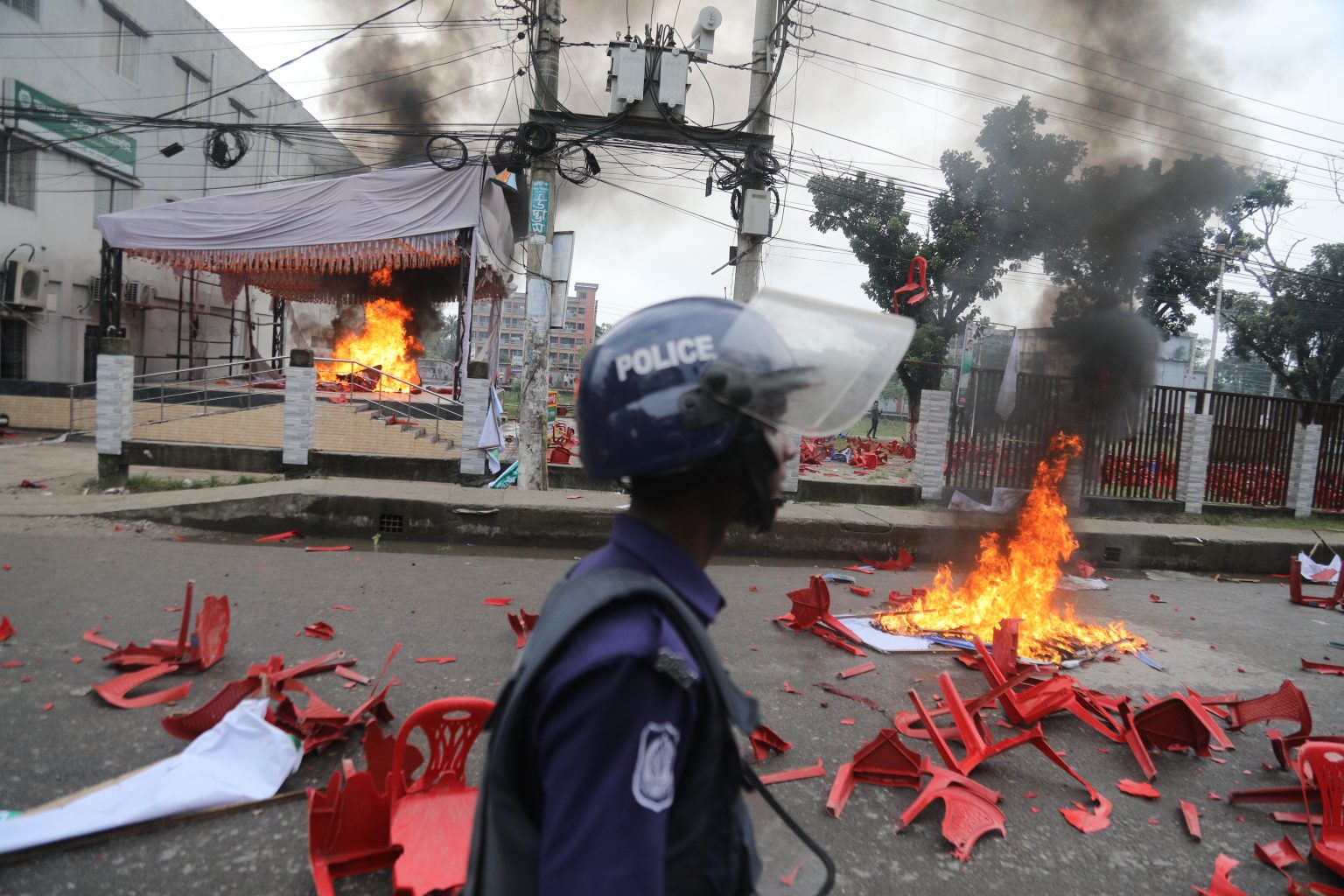On 16 July 2024, exactly one year ago, Bangladesh’s law enforcement opened fire on student demonstrators across major cities. One year later, on the same date in 2025, the political landscape has been dramatically reversed. The students who once faced bullets have since formed a political party—the National Citizen Party (NCP)—and led a rally in Gopalganj, the home district of ousted prime minister Sheikh Hasina.
What makes this moment particularly significant is that the same state forces who cracked down on students a year ago are now protecting them—this time opening fire not on NCP leaders, but on activists of the ousted Awami League who attempted to disrupt the rally.
Political analysts say the events in Gopalganj reflect a profound transformation in Bangladesh’s power structure. The memories of last year’s violent crackdown—marked by tear gas, water cannons, and live ammunition—are still fresh. Yet yesterday, the army was deployed to safeguard student leaders, while police fired sound grenades and blank rounds to disperse former ruling party loyalists.
As the NCP rally concluded around 2:45pm in the town’s municipal park, its motorcade came under coordinated attack from multiple directions. Despite initial efforts to calm the situation, police and military eventually resorted to force. Senior NCP leaders were rescued by a military Armoured Personnel Carrier (APC).
Gopalganj, once a political fortress of the Awami League, has become a potent symbol in this shifting landscape. Following the dramatic fall of Sheikh Hasina’s government on 5 August 2024, Gopalganj remained the last bastion of organised party resistance. Her loyalists stayed active in the region until many were arrested or forced underground during subsequent military operations.
In that context, the NCP’s “March to Gopalganj” was more than just a political programme—it was a declaration of a new power centre. Yet the march was marred by violence: police vehicles and the Upazila Nirbahi Officer’s convoy were attacked, the rally stage was set ablaze, and bloody clashes erupted between Awami League supporters and law enforcement.
Analysts suggest the event carries a dual message. On the one hand, it signals state-backed endorsement of the NCP’s political legitimacy. On the other, it appears to have reignited activism among remnants of the once-dominant Awami League.
Though the march is seen as a bold statement under the military-backed interim government, it has also stirred embers in what remains of the Awami League’s local network. Images and videos of the violence in Gopalganj have been widely circulated in domestic and international media, putting the Awami League—deemed politically irrelevant until recently—back into the spotlight.
One thing, however, is now abundantly clear: those who once suffered the brunt of state repression are today shielded by the same institutions of power. Meanwhile, those who once wielded the coercive machinery of the state now find themselves at the receiving end. This inversion offers a stark glimpse into Bangladesh’s enduring political paradox.
Whether the NCP can convert this symbolic triumph into long-term political capital remains to be seen. And whether the Awami League can transform renewed attention into organisational revival is an open question.


